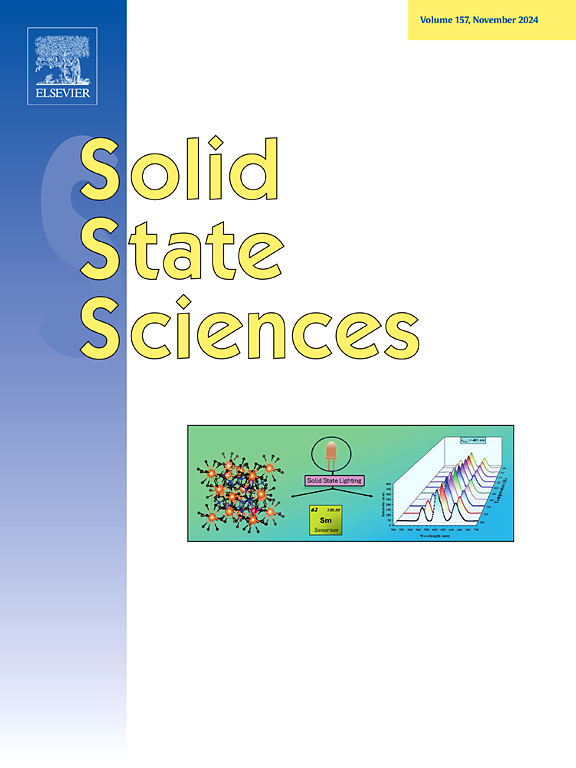Carbon quantum dots modified BiVO4 for boosting visible-light-responsive photocatalytic performance
IF 3.3
3区 化学
Q2 CHEMISTRY, INORGANIC & NUCLEAR
引用次数: 0
Abstract
Photocatalytic technology can utilize sunlight to achieve deep degradation of organic dyes under the action of catalysts. Herein, a novel composite of carbon quantum dots (CQDs) and bismuth vanadate (BiVO4) nanoparticles were constructed via the facile solvothermal method. The procured CQDs/BiVO4 composites exhibit large specific surface area, narrow bandgap, low recombination efficiency of photo-induced electron-hole pairs, and rapid charge transfer. The optimized CQDs/BiVO4 composite (CB-3) loading 20 mL CQDs solution (∼1 mg mL−1) can perfectly degrade methyl orange (MO), whose apparent rate constant (kapp) is 4.4 times greater than that of pure BiVO4. Noteworthy, CQDs can act as an electron acceptor to hinder photoinduced electron-hole binding in BiVO4 and extend the range of light absorption due to its unique up-conversion. Moreover, the CQDs/BiVO4 photocatalyst demonstrates the excellent photocatalytic stability, which is conducive to the practical application. The design and fabrication of CQDs/BiVO4 composites provides an available strategy for the development of BiVO4-based photocatalysts.

碳量子点修饰BiVO4提高可见光响应光催化性能
光催化技术是利用太阳光在催化剂作用下实现有机染料深度降解的技术。本文通过溶剂热法构建了一种新型的碳量子点(CQDs)和钒酸铋(BiVO4)纳米颗粒的复合材料。所制备的CQDs/BiVO4复合材料具有比表面积大、带隙窄、光致电子-空穴对复合效率低、电荷转移快等特点。优化后的CQDs/BiVO4复合材料(CB-3)负载20 mL CQDs溶液(~ 1 mg mL−1),可以很好地降解甲基橙(MO),其表观速率常数(kapp)是纯BiVO4的4.4倍。值得注意的是,CQDs可以作为电子受体阻碍BiVO4中光诱导的电子-空穴结合,并由于其独特的上转换而扩大光吸收范围。此外,CQDs/BiVO4光催化剂表现出优异的光催化稳定性,有利于实际应用。CQDs/BiVO4复合材料的设计和制备为开发基于BiVO4的光催化剂提供了一种可行的策略。
本文章由计算机程序翻译,如有差异,请以英文原文为准。
求助全文
约1分钟内获得全文
求助全文
来源期刊

Solid State Sciences
化学-无机化学与核化学
CiteScore
6.60
自引率
2.90%
发文量
214
审稿时长
27 days
期刊介绍:
Solid State Sciences is the journal for researchers from the broad solid state chemistry and physics community. It publishes key articles on all aspects of solid state synthesis, structure-property relationships, theory and functionalities, in relation with experiments.
Key topics for stand-alone papers and special issues:
-Novel ways of synthesis, inorganic functional materials, including porous and glassy materials, hybrid organic-inorganic compounds and nanomaterials
-Physical properties, emphasizing but not limited to the electrical, magnetical and optical features
-Materials related to information technology and energy and environmental sciences.
The journal publishes feature articles from experts in the field upon invitation.
Solid State Sciences - your gateway to energy-related materials.
 求助内容:
求助内容: 应助结果提醒方式:
应助结果提醒方式:


